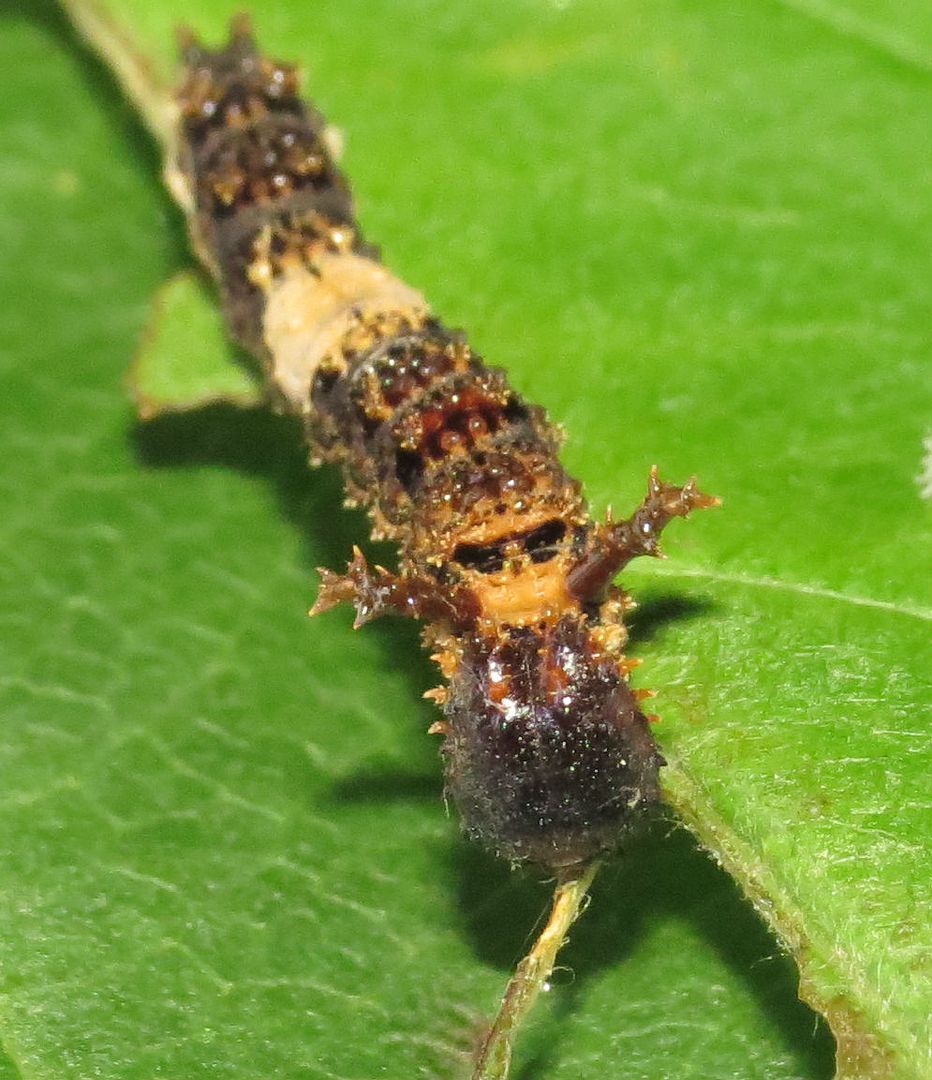The Red Spotted Purple, Limenitis arthemis, that I have in captivity has grown a bit since I last bothered to look at its container. It's been nibbling the same leaf in there for quite a few days now. I add a free leaf off the crab-apple tree its egg was laid upon ever few days. I also put a wadded up tissue that's soaking wet with water in the container so it doesn't dry out, though I'm not sure how necessary this is. I know ants are in danger of drying out so perhaps caterpillars have the same risk?
We're now in what I believe to be the third instar. It's no longer making a stick out of frass to hide on, which the younger instars do to escape ants. Instead more natural defenses are starting to develop. I suspect from here on, birds would be the primary predator over ants. Their coloration is starting to mimic that of bird droppings. So they've gone from hanging out on a poop stick, to looking like one!
And of course it's now sporting a lovely set of jagged horns. My understanding is the horns are hollow and intended to break apart in the bird's throat to, ideally, puncture a hole in the crop or wind pipe killing the bird dead. This probably doesn't happen when they're this small, but I can easily see some damage being done when they're bigger. Birds don't have teeth to chew them up first.
Remember adult birds rarely eat insects as their own food sources. Seeds and berries are the fuel of most adults while protein rich insects are important for baby birds. Would you feed something covered in thorns and looked like poop to your children? (Granted they're eating it half digested as you vomit it from into their mouth, but still someone has to do the initial eating!)

